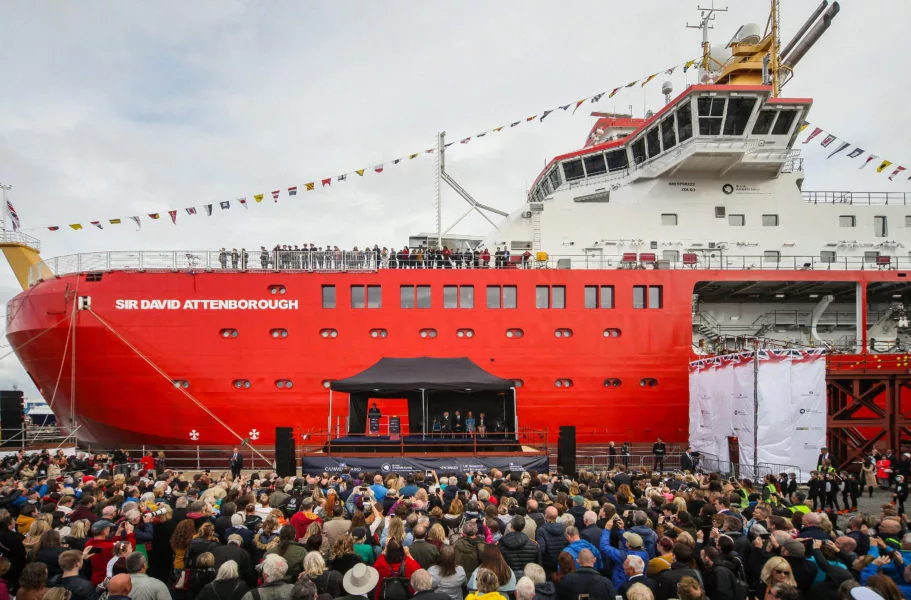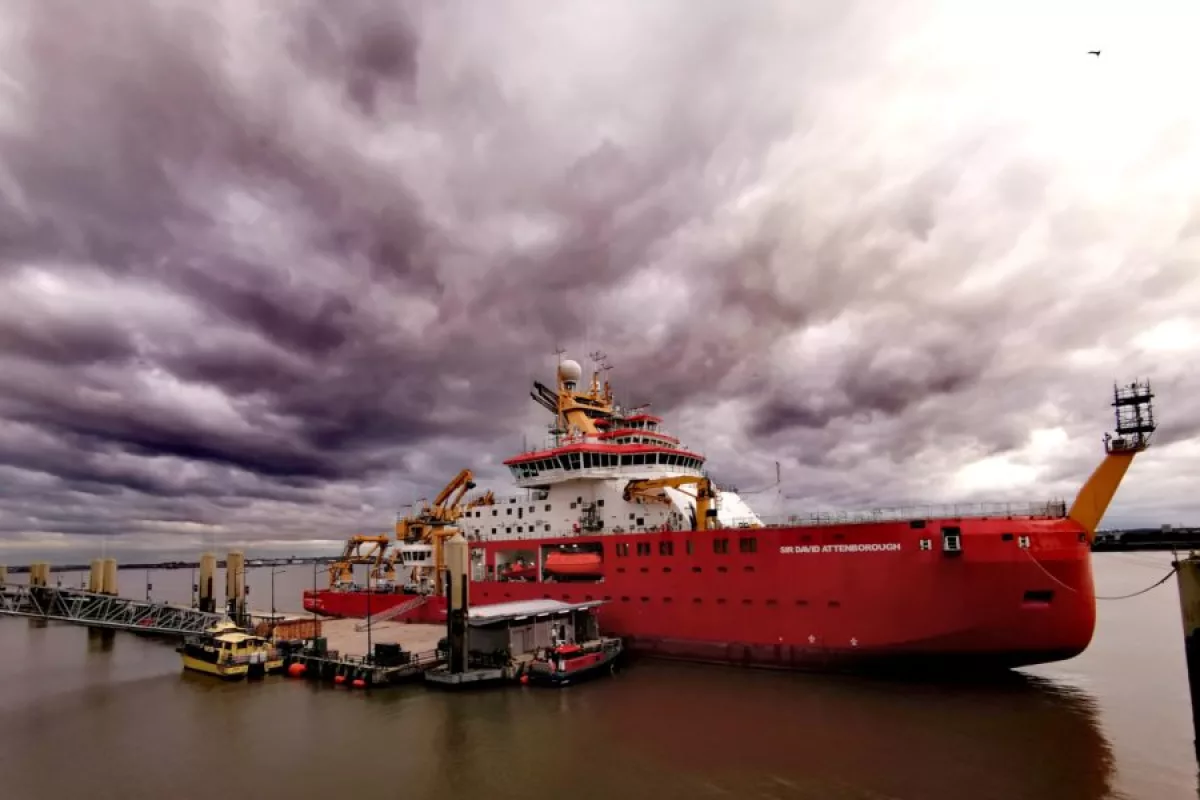The cutting-edge polar research ship the RRS Sir David Attenborough – which the public attempted to christen "Boaty McBoatface" – has finally set sail from its shipyard. The already legendary ship will now be put through sea trials ahead of being officially handed over for service in November this year.
Back in April 2016, the British Antarctic Survey (BAS) made the good-hearted but naïve decision to invite the public to vote on the name of their upcoming 15,000-tonne (16,535-US ton) science vessel.
Naturally, the people seized the opportunity for shenanigans, and overwhelmingly elected to name the research ship the RSS Boaty McBoatface to the tune of 124,109 votes. For context, the next most popular name received a trifling 34,371 votes.
Of course, the BAS wasn’t about to have its shiny new science battleship christened Boaty McBoatface, and so announced that it would betray the people. The ship would instead be christened the RSS Sir David Attenborough, a name which is very hard to argue against, and that garnered a mere 10,284 votes during the competition.
In terms of scandal, the cold, calculating move ranks alongside the 2006 decision to demote Pluto from the rank of planet, which large swathes of the world’s population are still not over.
To assuage the public’s mounting wrath, the BAS announced that the name Boaty McBoatface would instead be gifted to a high-tech, uncrewed submarine. The offering was accepted, and the country lowered their pitchforks.

Construction of the RSS Sir David Attenborough began in October 2016 with the laying of the future ship’s keel. Over four years, hundreds of workers at the Cammell Laird shipyard (located on the west coast of Great Britain) labored to create the next generation of science vessel.
Its mission, when it embarks on its maiden voyage to the Antarctic in 2021, will be to use state-of-the-art technology to shed light on the changes taking place in the polar ocean environment, and the effect that climate change is having on our world.
On Wednesday Oct. 21st, the RSS Sir David Attenborough finally set sail from the shipyard, marking a major milestone on the virgin ship’s path to the polar realms. The Cammell Laird crew will now get to grips with the £200-million (about US$263 million) vessel before putting it through technical trials.
This 14-day proving period in the water off North Wales will test the ship’s propulsion, steering, engineering and navigation systems.
"Although the vessel’s construction is now complete, trials are a critical and final part of the program as they allow our engineers and the ship’s crew to put the vessel through its paces at sea," stated Linton Roberts, Director of Operations at Cammell Laird. "Over the next two weeks our engineers will assess and record important data about RRS Sir David Attenborough’s engineering performance to ensure every aspect of its operation is running safely and efficiently, before it embarks on further scientific equipment testing with BAS."
Once the trials are over, the BAS crew will take command of the ship and head to Holyhead Port for a 50-day training period. The RSS Sir David Attenborough will then head out to sea once more to test a range of operational functions, including helideck landing and maneuvering.
In November the ship will be formally handed over to the Natural Environment Research Council, and in 2021 the RSS Sir David Attenborough will be subjected to ice trials in the Arctic, before finally embarking on its maiden voyage to Antarctica in November 2021.
Source: The British Antarctic Survey





